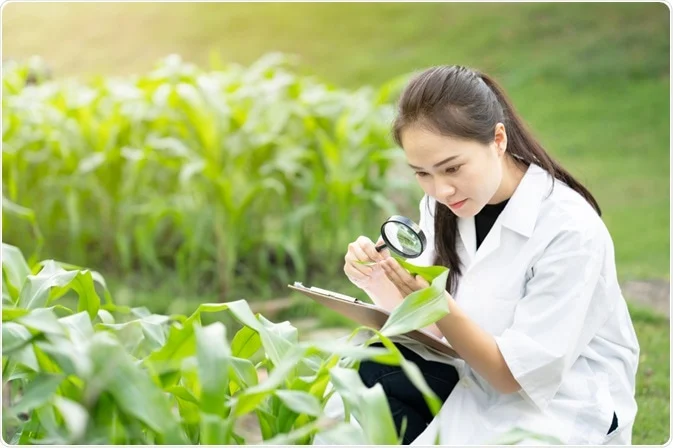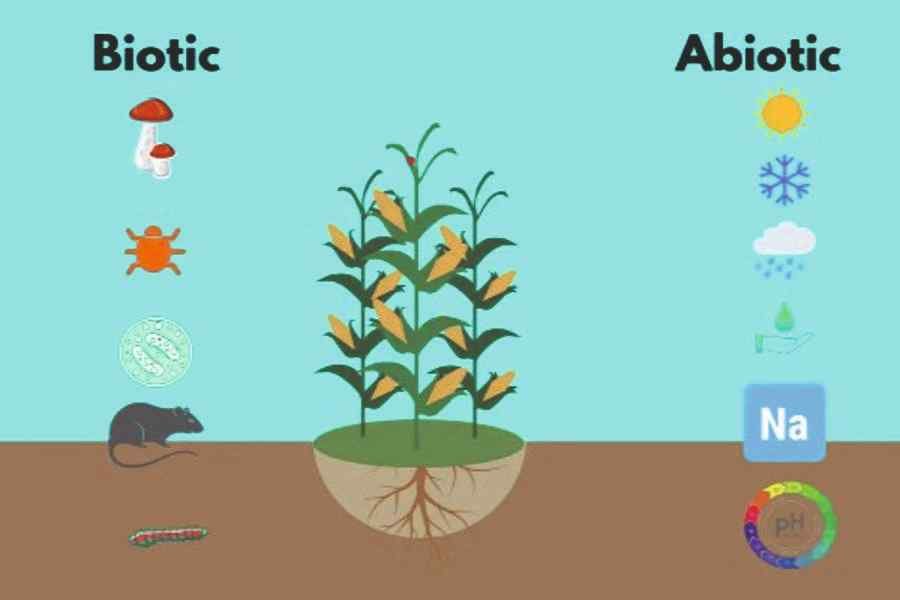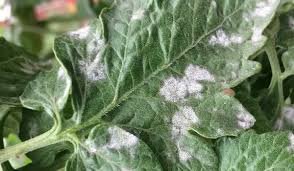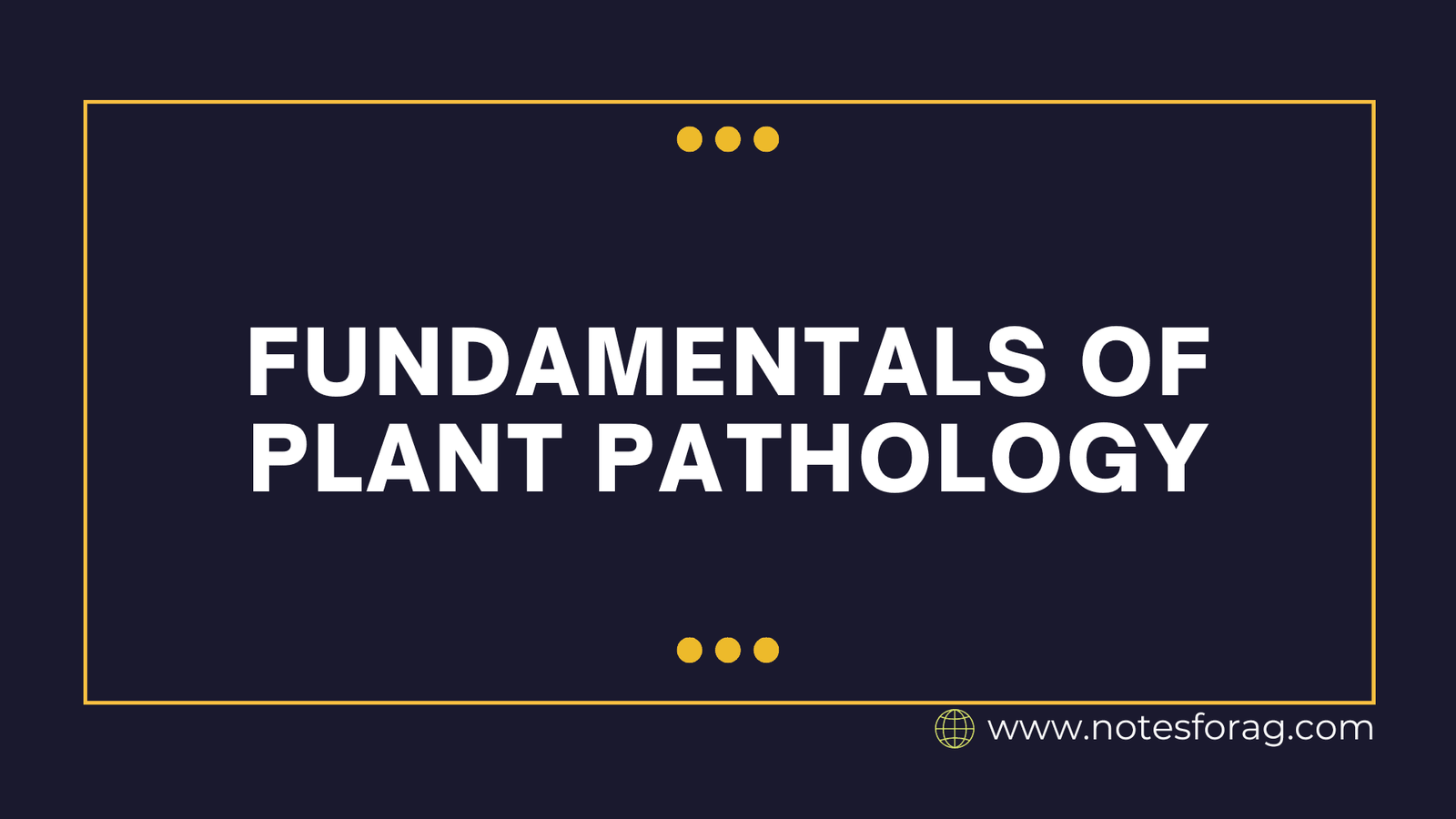1. Introduction to Plant Pathology

Plant pathology is the study of plant diseases, their causes, effects, and how to control or prevent them. Just like humans and animals, plants can also fall sick. These diseases can be caused by different living organisms like fungi, bacteria, viruses, nematodes, or by non-living factors like poor soil, pollution, and lack of nutrients.
Plant pathology helps farmers and scientists:
- Protect crops from damage
- Increase food production
- Prevent major crop losses
- Understand how diseases spread
Summary of Plant Pathology
- Plant pathology is the study of plant diseases, their causes, and how to prevent or control them.
- It helps farmers protect crops from harmful organisms like fungi, bacteria, viruses, and more.
- By understanding plant diseases, we can grow healthier plants, reduce crop loss, and ensure food security.
Table of Contents
2. History and Development of Plant Pathology
Plant diseases have been observed since ancient times. For example, people noticed wheat rust and potato blight thousands of years ago. However, they didn’t know what caused them.
Important Milestones:
- Anton de Bary (1860s): Known as the “Father of Plant Pathology.” He proved that fungi cause plant diseases.
- Robert Koch: Developed rules (Koch’s Postulates) to prove that a specific microbe causes a specific disease.
- The field has grown with the discovery of bacteria, viruses, and nematodes as disease agents.
- Now, we use microscopes, labs, biotechnology, and satellite tools to study plant diseases.
3. Common Terms in Plant Pathology
- Pathogen: A microbe or organism that causes disease.
- Host: The plant that gets infected.
- Disease: Abnormal condition that damages plant structure or function.
- Infection: Entry and growth of a pathogen in the host.
- Symptom: Visible sign of disease (e.g., yellow leaves, spots).
- Sign: Physical presence of the pathogen (e.g., mold, spores).
- Resistance: The plant’s ability to fight off a disease.
- Susceptibility: When a plant is easily affected by disease.
4. Causes of Plant Diseases
There are two major types of causes:

A. Biotic Causes (Living organisms):
- Fungi – Cause spots, blights, rusts, rots. (e.g., Late blight in potato)
- Bacteria – Cause wilts, cankers, and rots. (e.g., Citrus canker)
- Viruses – Cause stunting, mosaic, yellowing. (e.g., Tobacco Mosaic Virus)
- Nematodes – Small worms that attack roots. (e.g., Root-knot nematode)
- Phytoplasmas – Bacteria-like organisms causing yellowing.
- Protozoa – Rare, but they also cause some plant diseases.
B. Abiotic Causes (Non-living factors):
- Nutrient deficiency (e.g., yellowing due to lack of nitrogen)
- Drought or water stress
- Frost or extreme temperatures
- Air pollution (e.g., acid rain)
- Chemical injury (e.g., pesticide burn)
5. Symptoms of Plant Diseases

Symptoms are signs that show a plant is not healthy. Common symptoms include:
- Leaf spots – Brown or black patches on leaves
- Blight – Sudden death of leaves or branches
- Wilting – Plant droops due to lack of water flow
- Rot – Decay of roots, stems, fruits
- Chlorosis – Yellowing of leaves due to lack of chlorophyll
- Gall – Swellings or lumps on stems/roots
- Stunting – Poor growth or dwarfing
- Mosaic – Patchy light and dark green patterns on leaves
6. How Plant Diseases Develop (Disease Cycle)
Most plant diseases follow a cycle:
- Inoculation: Pathogen arrives on the plant.
- Penetration: It enters through wounds, stomata, or directly.
- Infection: The pathogen establishes itself.
- Colonization: It spreads inside the plant.
- Reproduction: Produces new spores, bacteria, or viruses.
- Survival: Pathogen remains alive in soil, seeds, or plant parts to start again next season.
Types of disease cycles:
- Monocyclic: Only one cycle per season (e.g., smut diseases).
- Polycyclic: Many cycles in one season (e.g., late blight of potato).
7. How Pathogens Cause Disease (Mechanism of Pathogenesis)
Pathogens use different strategies to harm plants:
- Enzyme production – Break down plant cell walls.
- Toxin release – Poison plant cells and tissues.
- Hormonal imbalance – Disturb normal growth by producing plant-like hormones.
- Block water transport – Lead to wilting or death.
- Kill tissues – Necrosis (death of plant parts).
8. Plant Defense Mechanisms
Plants are not helpless. They try to fight off diseases.
A. Structural defenses:
- Thick cuticle (outer layer)
- Tough cell walls
- Hairs (trichomes)
- Bark and cork layers
B. Biochemical defenses:
- Phytoalexins – Antimicrobial chemicals made when under attack.
- Enzymes – Destroy pathogen parts.
- Proteins and toxins – Stop pathogen growth.
Types of resistance:
- Vertical resistance – Specific to certain pathogen strains.
- Horizontal resistance – General, long-lasting resistance.
9. Role of Environment in Disease Development
Plant disease needs three things, called the Disease Triangle:
- Susceptible host
- Virulent pathogen
- Favorable environment
For example:
- Fungal diseases like powdery mildew spread fast in humid, warm conditions.
- Cold stress may make plants more vulnerable to bacterial infections.
10. Diagnosis of Plant Diseases
Accurate diagnosis is important to treat the disease correctly.
Methods used:
- Visual observation – Checking symptoms on leaves, stems, fruits
- Microscopy – Looking for fungal spores or bacterial cells
- Culture techniques – Growing pathogens in lab media
- Serological tests – ELISA to detect viruses
- Molecular tests – PCR to find DNA of pathogens
11. Principles of Plant Disease Management
The main goal is to prevent, reduce, or cure diseases. There are several ways:
- Exclusion – Keep pathogens out (e.g., using certified seeds, quarantine)
- Eradication – Destroy infected plants or soil (e.g., burning infected plants)
- Protection – Use of fungicides or insecticides to protect healthy plants
- Resistance – Use disease-resistant plant varieties
- Therapy – Apply heat or chemicals to cure infected plants
- Integrated Disease Management (IDM) – Combine all methods in a smart way
12. Methods of Plant Disease Control
A. Cultural control:
- Crop rotation
- Proper spacing
- Clean seeds
- Field sanitation
B. Physical control:
- Soil solarization – Using heat from sunlight to kill soil pathogens
- Hot water treatment – For seeds and cuttings
C. Chemical control:
- Fungicides (e.g., mancozeb, copper oxychloride)
- Bactericides (e.g., streptomycin)
- Use carefully to avoid resistance and environmental harm
D. Biological control:
Use of helpful microbes like Trichoderma, Pseudomonas to kill or outcompete harmful ones
E. Genetic resistance:
Growing varieties that are naturally resistant to diseases
13. Examples of Common Plant Diseases
| Disease | Causal Agent | Host Plant | Symptoms |
|---|---|---|---|
| Late blight of potato | Fungus (Phytophthora infestans) | Potato | Dark spots on leaves, rotting tubers |
| Citrus canker | Bacteria (Xanthomonas citri) | Citrus trees | Raised lesions on leaves and fruits |
| Tobacco Mosaic | Virus (TMV) | Tobacco, tomato | Mosaic pattern on leaves |
| Root-knot | Nematode (Meloidogyne spp.) | Many plants | Swollen roots, stunted plants |
14. Importance of Plant Pathology
Plant pathology helps in:
- Protecting crops from losses
- Increasing yield and farmer income
- Reducing pesticide use
- Promoting sustainable agriculture
- Ensuring food security
15. Future of Plant Pathology
The field is growing fast with new technologies:
- Biotechnology – Creating genetically resistant crops
- Remote sensing – Detecting disease using drones or satellites
- Artificial Intelligence – Predicting disease outbreaks
- Eco-friendly solutions – Less use of chemicals, more organic farming
Conclusion
Plant pathology is a very important field in agriculture and plant science. It helps us understand how and why plants get sick, what organisms or conditions cause diseases, and how we can prevent or manage them. Without proper knowledge of plant diseases, farmers can lose their crops, which affects food supply, income, and even the economy of a country. Through the study of plant pathology, we learn how to protect plants using different methods like resistant varieties, clean farming practices, biological control, and safe use of chemicals.
We also understand the importance of the environment in disease development, and how climate, soil, and weather conditions play a major role in spreading or controlling plant diseases. In today’s world, with the help of modern science, biotechnology, and digital tools, we can detect diseases early and take smart steps to protect our crops in a more eco-friendly and sustainable way. By applying plant pathology in real life, we not only help farmers grow healthy crops but also ensure a stable food supply for everyone. So, learning and applying the fundamentals of plant pathology is essential for building a better, greener, and healthier future.
Frequently Asked Questions (FAQs)
1. What are the common symptoms of plant diseases?
Common symptoms of plant diseases include yellowing or wilting of leaves, spots or lesions on leaves and stems, rotting of roots or fruits, stunted growth, and abnormal swellings called galls. These symptoms show that the plant is unhealthy and may be infected by a pathogen.
What is the role of crop rotation in managing plant diseases?
Crop rotation helps control plant diseases by changing the type of plants grown in a field each season. This breaks the life cycle of pathogens that survive in soil or plant debris, reducing disease buildup and keeping crops healthier.
How can I prevent fungal infections in my garden plants?
To prevent fungal infections, keep plants well spaced for good air circulation, avoid watering leaves directly, remove and destroy infected plant parts, and use fungicides if needed. Healthy soil and proper sanitation also reduce fungal disease risk.
Related Articles

